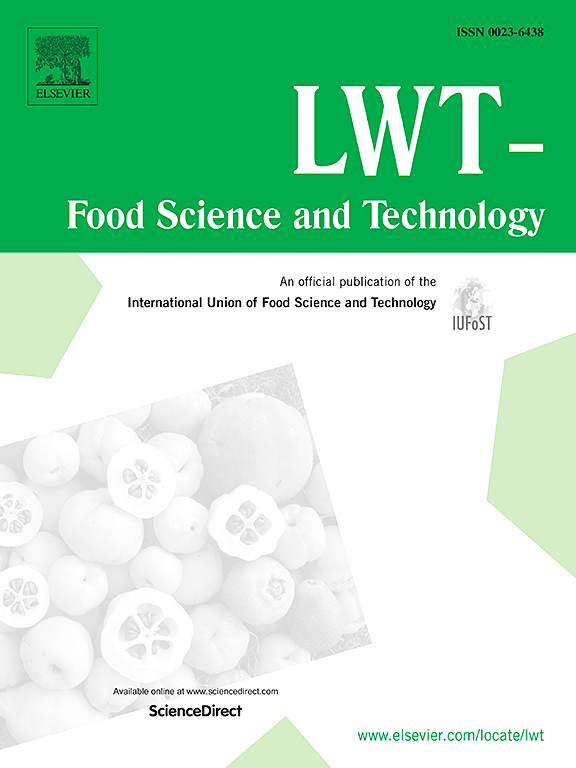Hybrid aerogels of spirulin and whey proteins as novel cellular solids
IF 6
1区 农林科学
Q1 FOOD SCIENCE & TECHNOLOGY
引用次数: 0
Abstract
This work proposes a new strategy to obtain cellular solids of spirulin (SP) cells and whey protein (WP) using the aerogel production process. To this aim, aqueous suspensions containing 20 g/100g of a mixture of WP and SP in different ratios, were submitted to thermal gelation. The obtained hydrogels were characterised by an intense green colour and the typical unpleasant fishy odour of spirulin. Hydrogels were then submitted to ethanol solvent exchange and supercritical-CO2 drying, leading to hybrid aerogels, which were analysed for physical properties (color, density, volume contraction, firmness, microstructure). The conversion of hydrogels into aerogels partially reduced their green colour. The increase in SP in the aerogel progressively decreased its firmness, so that the aerogels obtained from suspensions containing more than 10 g/100g spirulin were not able to maintain the continuity of the aerogel network. The latter was demonstrated by SEM to consist of dried WP microgels organised in a tri-dimensional architecture embedding SP cells. The aerogel obtained from 10 g/100g SP suspension, did not swell or disintegrate upon absorption of both water and oil. Sensory analysis also showed this sample to have negligible SP odour. These results open new possibilities in the development of hybrid cellular solids with neutral sensory properties, posing the basis for a new approach to the engineering of food tissue analogues.
作为新型细胞固体的螺旋藻素和乳清蛋白混合气凝胶
这项研究提出了一种利用气凝胶生产工艺获得螺旋蛋白(SP)细胞和乳清蛋白(WP)细胞固体的新策略。为此,将含有 20 克/100 克不同比例 WP 和 SP 混合物的水悬浮液进行热凝胶化。获得的水凝胶呈浓绿色,并带有螺旋藻素典型的难闻腥味。然后将水凝胶进行乙醇溶剂交换和超临界二氧化碳干燥,得到混合气凝胶,并对其物理性质(颜色、密度、体积收缩、坚固性、微观结构)进行了分析。水凝胶转化为气凝胶后,其绿色部分减弱。气凝胶中 SP 的增加会逐渐降低其坚固性,因此从螺旋藻素含量超过 10 克/100 克的悬浮液中获得的气凝胶无法保持气凝胶网络的连续性。扫描电子显微镜(SEM)显示,后者由干燥的可湿性粉剂微凝胶组成,呈三维结构,嵌入了 SP 细胞。从 10 克/100 克 SP 悬浮液中获得的气凝胶在吸收水和油后不会膨胀或崩解。感官分析还表明,这种样品的 SP 气味可以忽略不计。这些结果为开发具有中性感官特性的混合细胞固体提供了新的可能性,为食品组织模拟工程的新方法奠定了基础。
本文章由计算机程序翻译,如有差异,请以英文原文为准。
求助全文
约1分钟内获得全文
求助全文
来源期刊

LWT - Food Science and Technology
工程技术-食品科技
CiteScore
11.80
自引率
6.70%
发文量
1724
审稿时长
65 days
期刊介绍:
LWT - Food Science and Technology is an international journal that publishes innovative papers in the fields of food chemistry, biochemistry, microbiology, technology and nutrition. The work described should be innovative either in the approach or in the methods used. The significance of the results either for the science community or for the food industry must also be specified. Contributions written in English are welcomed in the form of review articles, short reviews, research papers, and research notes. Papers featuring animal trials and cell cultures are outside the scope of the journal and will not be considered for publication.
 求助内容:
求助内容: 应助结果提醒方式:
应助结果提醒方式:


